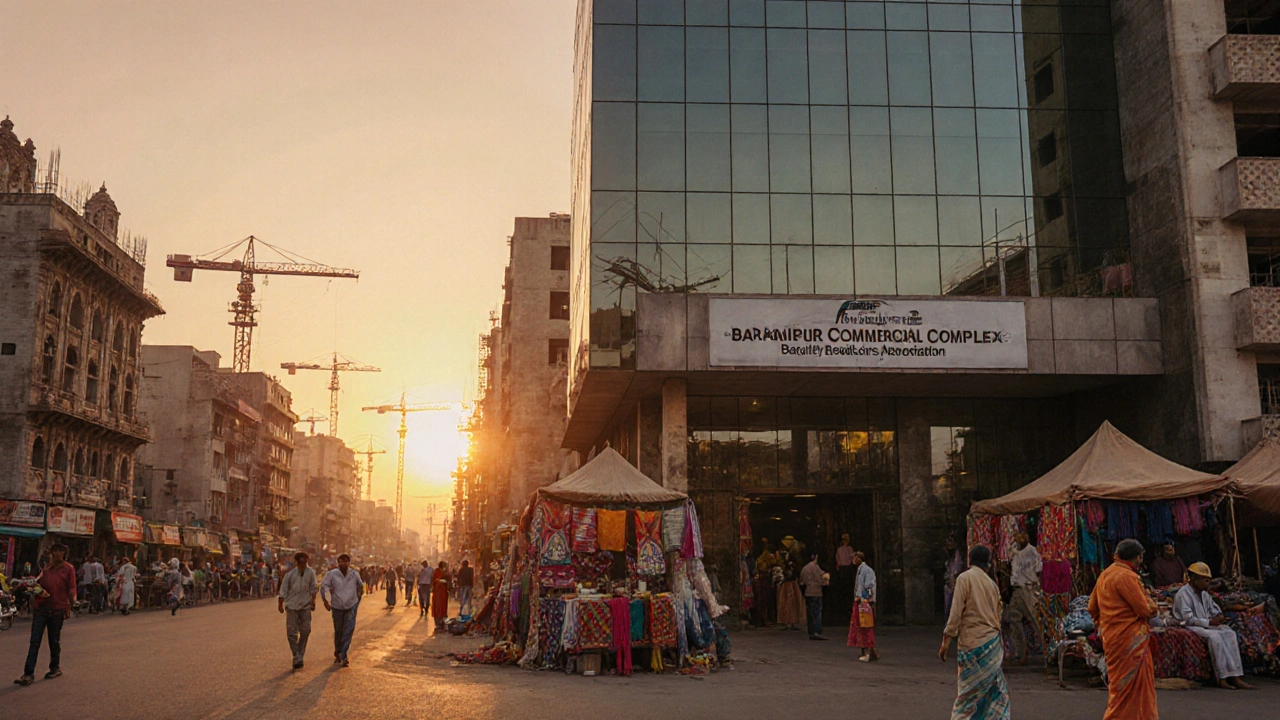Bareilly Real Estate Association Matchmaker
Select your role and priorities to find which real estate association in Bareilly best matches your needs.
Recommended Association
Looking for a reliable way to navigate Bareilly’s property scene? Knowing which local real‑estate groups you can trust makes the difference between a smooth transaction and a costly headache. Below you’ll find a practical rundown of the most active real estate associations in Bareilly, what they offer, and how to tap into their resources.
Key Takeaways
- Three major associations dominate Bareilly’s market: Bareilly Realtors Association (BRA), Bareilly Builders Association (BBA), and Bareilly Property Owners Forum (BPOF).
- All are registered with Uttar Pradesh’s Real Estate Regulatory Authority (UPRERA), ensuring compliance with state‑wide standards.
- Membership benefits range from legal support and market data to networking events and dispute‑resolution services.
- Contact details and membership criteria differ, so choose the group that matches your role-buyer, seller, developer, or investor.
- Leverage each association’s portals for verified listings, price trends, and trusted professional directories.
Why Real‑Estate Associations Matter in Bareilly
Bareilly, a historic city in Uttar Pradesh, has seen a construction boom over the past decade. New residential colonies, commercial complexes, and mixed‑use projects pop up regularly. With that growth comes a higher risk of fraud, delayed approvals, and opaque pricing. Associations act as an industry‑wide checkpoint: they certify members, lobby for better policies, and provide a collective voice that can negotiate with the local administration.
For homebuyers, an association‑backed developer usually means access to the UPRERA portal for project verification. For brokers, membership adds credibility when dealing with sellers and lenders. And for investors, the data shared by these bodies helps forecast price movements and spot emerging hotspots.
Introducing the Core Entities
Below are the primary players you’ll encounter when exploring Bareilly’s real‑estate ecosystem.
Bareilly Realtors Association is a not‑for‑profit body that brings together licensed real‑estate brokers, agents, and consultants operating in the city. Founded in 2012, it maintains a directory of verified members, hosts quarterly market‑trend seminars, and mediates broker‑seller disputes. Its headquarters sit in the Baraipur Commercial Complex, Bareilly.
Bareilly Builders Association represents construction firms, developers, and architectural consultancies. Established in 2008, the association focuses on standardizing building codes, facilitating land‑acquisition clearances, and lobbying for infrastructure upgrades with the municipal corporation.
Bareilly Property Owners Forum is a members‑only platform for existing homeowners, housing‑society presidents, and rental‑property investors. Launched in 2015, it offers legal advice on property disputes, organizes community‑maintenance workshops, and publishes an annual report on property‑value appreciation.
Uttar Pradesh Real Estate Regulatory Authority (UPRERA) is the state‑level watchdog that registers real‑estate projects, monitors developer compliance, and provides an online portal for buyer grievance redressal. All three Bareilly associations are recognized members, which means their listed developers automatically appear on the official RERA website.
Bareilly Development Authority oversees city‑wide planning, zoning, and issuance of building permits. While not an association per se, it works closely with the three groups to streamline approvals for member projects.
National Real Estate Association (NREA) provides a nationwide network for local bodies. Bareilly’s associations are affiliated, granting their members access to national policy updates, training modules, and a broader pool of certified professionals.

Comparison of the Three Main Associations
| Association | Year Established | Primary Membership Type | Core Services | Contact (Phone) |
|---|---|---|---|---|
| Bareilly Realtors Association | 2012 | Brokers & agents | Verified broker directory, dispute mediation, market seminars | +91‑0581‑2245789 |
| Bareilly Builders Association | 2008 | Developers & construction firms | Standardized building codes, land‑clearance assistance, infrastructure lobbying | +91‑0581‑2290112 |
| Bareilly Property Owners Forum | 2015 | Homeowners & investors | Legal advisory, community‑maintenance workshops, annual price‑trend report | +91‑0581‑2328456 |
How to Join a Bareilly Association
- Identify your professional role (broker, developer, homeowner).
- Visit the association’s official website or office during business hours.
- Download the membership application form; most require proof of licensure, company registration, or property ownership.
- Pay the annual fee (typically ₹3,000‑₹7,000 depending on the tier).
- Attend the orientation session; you’ll receive a membership card and access to the member portal.
Many associations now offer online registration through a simple portal. For example, BRA’s portal bra‑bareilly.org lets you upload documents, track fee status, and book seats for upcoming seminars.
Practical Benefits for Different Stakeholders
Homebuyers can cross‑check a developer’s RERA registration number via the association’s member list, reducing the risk of counterfeit projects. They also get invites to open‑house events where they can meet multiple builders in one place.
Real‑estate agents enjoy a vetted database of developers who respect brokerage commissions, plus a dispute‑resolution panel that can resolve payment conflicts quickly.
Developers gain a collective voice when negotiating with the Bareilly Development Authority for road‑width changes or utility hookups. The association’s lobby has successfully secured faster approval for over 30 projects in the last three years.
Investors receive quarterly market‑trend newsletters that include price‑index data, upcoming zoning changes, and upcoming large‑scale projects-critical intel for timing entry or exit.

Common Pitfalls and How to Avoid Them
- Assuming all members are automatically RERA‑compliant. Always verify the RERA registration number on the official portal, even if the association lists the developer.
- Skipping the orientation. Missing the orientation means you won’t know about the legal helpline that many associations provide for free during the first year.
- Ignoring the grievance redressal mechanism. Most associations have a 48‑hour response SLA for member complaints; use it before escalating to the district court.
- Overlooking annual renewal. Membership lapses can lead to loss of access to market data and event discounts.
Next Steps: Making the Most of Your Association Membership
- Set clear goals. Decide whether you need networking, legal support, or market intelligence.
- Pick the right group. Brokers gravitate toward BRA, while large developers find BBA more useful.
- Leverage the member portal. Download the latest price‑trend report and subscribe to the monthly newsletter.
- Participate in events. Attend at least two seminars per quarter to stay visible and up‑to‑date on policy shifts.
- Use the grievance desk. If a transaction stalls, file a complaint through the association’s online ticketing system.
Following these steps will not only protect your investments but also give you a competitive edge in Bareilly’s bustling property market.
Frequently Asked Questions
Are the real‑estate associations in Bareilly government‑run?
No. They are private, non‑profit bodies registered under the Societies Registration Act. However, they are recognized by UPRERA, which gives them a quasi‑official status.
Do I need to be a licensed broker to join the Bareilly Realtors Association?
Yes. Membership is restricted to individuals holding a valid real‑estate brokerage licence issued by the Uttar Pradesh government.
How can I verify if a developer listed by an association is RERA‑registered?
Visit the official UPRERA website, enter the project’s registration number, and confirm the status. Most associations also display the RERA number on their member directory pages.
What is the typical annual fee for joining the Bareilly Builders Association?
The fee ranges from ₹5,000 for small contractors to ₹12,000 for large development firms. Discounts are offered to members who also belong to the National Real Estate Association.
Can foreign investors become members?
Yes, provided they have a registered Indian entity and comply with FEMA regulations. They usually join through the property‑owner forum, which caters to investors holding residential or commercial assets in Bareilly.
Wrapping Up
In a city where construction is booming and property values are climbing, aligning yourself with a reputable real‑estate association is a smart move. Whether you’re a broker hunting for reliable listings, a developer seeking smoother approvals, or a buyer wanting assurance, Bareilly’s associations offer a structured, trustworthy framework.
Take the time to review each group’s membership perks, verify RERA credentials, and actively participate in their events. The relationships you build today will pay dividends in smoother deals, lower risk, and better market insight tomorrow.

10 Responses
If you're a broker in Bareilly, joining the BRA gives you access to a vetted directory that lenders actually trust.
It also hooks you up with quarterly market seminars where you can pick up the latest price trends.
Wow, because nothing says "reliability" like a group that meets for coffee and calls it a seminar.
The Bareilly Builders Association (BBA) is duly registered under the Societies Registration Act of 1860, thereby satisfying statutory requirements for collective representation.
Its membership comprises licensed construction firms and architectural consultancies, all of which must submit audited financial statements for admission.
Moreover, the BBA maintains a liaison office with the Uttar Pradesh Real Estate Regulatory Authority (UPRERA), ensuring that all listed projects are cross‑verified against the state’s official registry.
Consequently, stakeholders can rely upon the association’s endorsements as a marker of regulatory compliance.
Indeed, the BBA’s alignment with UPRERA elevates its stature beyond the usual trade guilds, making it a premier conduit for developers aspiring to benchmark against national standards.
All these groups are just a way for the city to keep tabs on us
Actually joining gives you real help not just city watch
You get legal advice and data you can use
So you think paying a few thousand rupees will magically solve all your building headaches?
Good luck with that fantasy.
While the optimism is refreshing, let’s remember that behind every glossy brochure lies a maze of permits, inspections, and local politics that can turn a dream project into a bureaucratic nightmare.
When you sign up for the Bareilly Builders Association you instantly get a direct line to the city’s planning office.
That line saves you weeks of back‑and‑forth on land‑clearance paperwork.
Members also receive a quarterly digest that breaks down price trends across the three zones of the city.
The digest includes raw data tables, so you can run your own spreadsheets without relying on third‑party analysts.
If you’re a developer, the association’s lobby team pushes for faster utility hookups, which can cut construction timelines by 10 to 15 percent.
Their legal panel reviews your contracts to make sure you’re not left exposed to hidden liabilities.
When disputes arise, there’s an internal mediation service that resolves most issues within a week.
The networking events happen twice a month and they’re surprisingly low‑key, just coffee and a quick pitch round.
You’ll meet other developers, material suppliers, and a few municipal officials who can give you the heads‑up on upcoming zoning changes.
Even if you’re just a small contractor, the group’s bulk‑purchase agreements on cement and steel can shave a few thousand rupees off your material costs.
The association also runs a mentorship program where seasoned builders guide newer entrants through the regulatory maze.
All of that adds up to a smoother, more predictable building process.
In contrast, going solo means you have to chase every department on your own, which often leads to delays.
You’ll also miss out on the collective data that helps you price your projects competitively.
So, if you value time and want to reduce risk, the membership fee of roughly ₹7,000 is a small price to pay.
Bottom line: the association is a practical tool, not just a fancy networking club.
While your exhaustive enumeration is impressive, one might wonder if the average developer has the patience to peruse sixteen sentences before deciding on a modest membership fee.